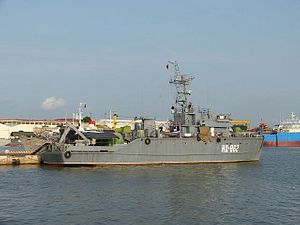In mid-2014, the People’s Republic of China deployed an oil rig, protected by Chinese coast guard vessels, into waters claimed by Vietnam. Prior to this, the Chinese tried to prevent the resupply of Philippine Marines based on the Second Thomas Shoal in March 2014. Hence, buoyed by an economy that fuels its regional military preponderance, Beijing appears determined to realize its ambition of annexing the South China Sea and its territories.
However, despite Vietnamese and Filipino naval inferiority vis-à-vis China, they need not resign themselves to the slow erosion of their sovereignty, eventual relinquishment of their Exclusive Economic Zones, and their claim to South China Sea territories. Indeed, Vietnam has recently acquired Russian Kilo-class submarines and ordered Dutch Sigma-class corvettes, while the Philippines has taken delivery of two former U.S. Coast Guard high-endurance cutters, in attempts to shore up their maritime projection capabilities. However, more needs to and can be done to balance the ever increasing Chinese deployment of coast guard vessels to the South China Sea.
Economically Feasible EEZ Preservation
Just as land cannot be controlled without troops, waters cannot be policed and influenced without maritime assets. Thus, the principle of “possession being nine-tenths of the law” duly applies, and both Hanoi and Manila must project enough presence into their respective EEZs to turn their de jure claims into de facto reality, irrespective of Beijing’s expansionist “nine-dash line” objective.
Therefore, in the business of contested sovereignty, what matters is not the ownership of several technologically advanced warships, which would not be available for year-long patrols over all designated EEZ sectors (bearing in mind the need for dry dock repairs and non-operational sea trials), but rather the ability to deploy less technically capable yet more numerous patrol craft or cutters so as to maintain a constant EEZ enforcement presence. Indeed, Beijing realizes this and deploys the Chinese Coast Guard in force in the waters near the Spratly Islands. If the Philippines and Vietnam wish to hold on to the South China Sea waters still under their control, they need to ramp up their maritime capabilities.
However, considering the comparatively modest Vietnamese and Filipino defense budgets, any sizeable purchase of patrol vessels needs to be accomplished economically, and this is where these states can emulate the EU’s collective procurement of the Tornado and Eurofighter combat aircraft programs.
In the 1970s and from the 1990s to early 2000s, the Tornado and Eurofighter were developed by Britain, Germany and Italy in the first case, and by Britain, Germany, Italy and Spain in the second. These collective aircraft projects enabled not only the sharing of development costs, but more importantly the production of enough standardized aircraft so that economies of scale and more affordable unit costs could be realized. Partially applying such a collective acquisition approach to a joint Philippine-Vietnam endeavor could involve:
1) The building of standardized hulls and the required crew fittings in a politically supportive third country prepared to offer affordable prices, and which possesses a developed ship building industry capable of significant cost efficiency if a large enough order is made (i.e. 24 ships). Japan is a possible candidate.
2) The joint purchase of common propulsion and engine systems from a state that seeks to balance potential Chinese regional hegemony. Such a purchase could benefit from a quantity based discount and competitive pricing based on political factors. Japan and the U.S. are possible sources.
3) The joint procurement of non-security sensitive navigation systems, along with the installation of weapons fittings, which can accommodate the general purpose and heavy machine guns used by both Vietnam and the Philippines. Once again, this equipment can be bought from sources like Japan or the U.S., which are prepared to offer politically-assisted bulk discounts.
After this basic construction, Hanoi and Manila would then take delivery of their agreed upon shares of the fleet and have sensitive components like radar, communications suites, automatic cannon with fire control systems and even higher order capabilities like submarine detecting sonar and additional armament, installed at their respective naval facilities. If all this can be accomplished, it could be a budget friendly avenue for Vietnam and the Philippines to beef up their coast guard or auxiliary navy capabilities.
Intangible Benefits
Better equipped Vietnamese and Filipino patrol vessels would offer tangible benefits, like the enhanced ability to maintain EEZ surveillance and prevent or stop various illegal marine activities, while being better able to challenge Chinese incursions. However, it is the intangible benefits that are arguably more important. These include improvements in intra-ASEAN defense diplomacy, which normally results from closer bilateral military cooperation (of which collective procurement would certainly count); the establishment of a modus vivendi between Hanoi and Manila that sovereignty over the Spratly Islands will ultimately have to be shared, leading to an avoidance of future territorial disputes between them; and greater confidence for the Philippines that it can build capabilities without relying on overt donations.
Nah Liang Tuang is an Associate Research Fellow at the Institute of Defense and Strategic Studies, a constituent unit of the S. Rajaratnam School of International Studies (RSIS), Nanyang Technological University.

































